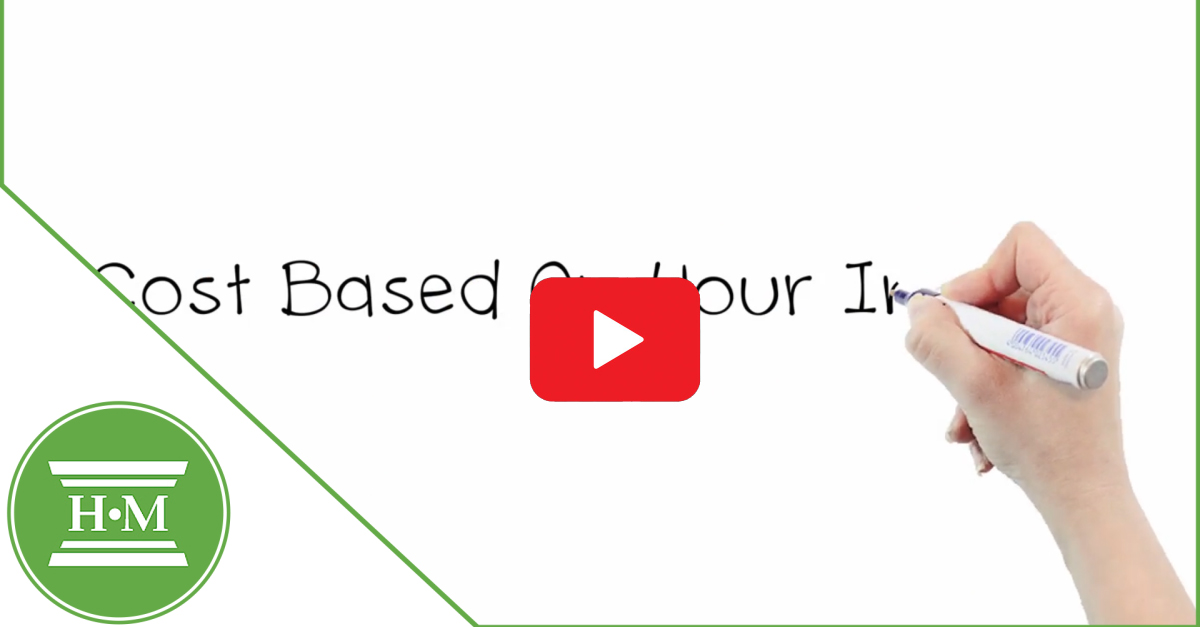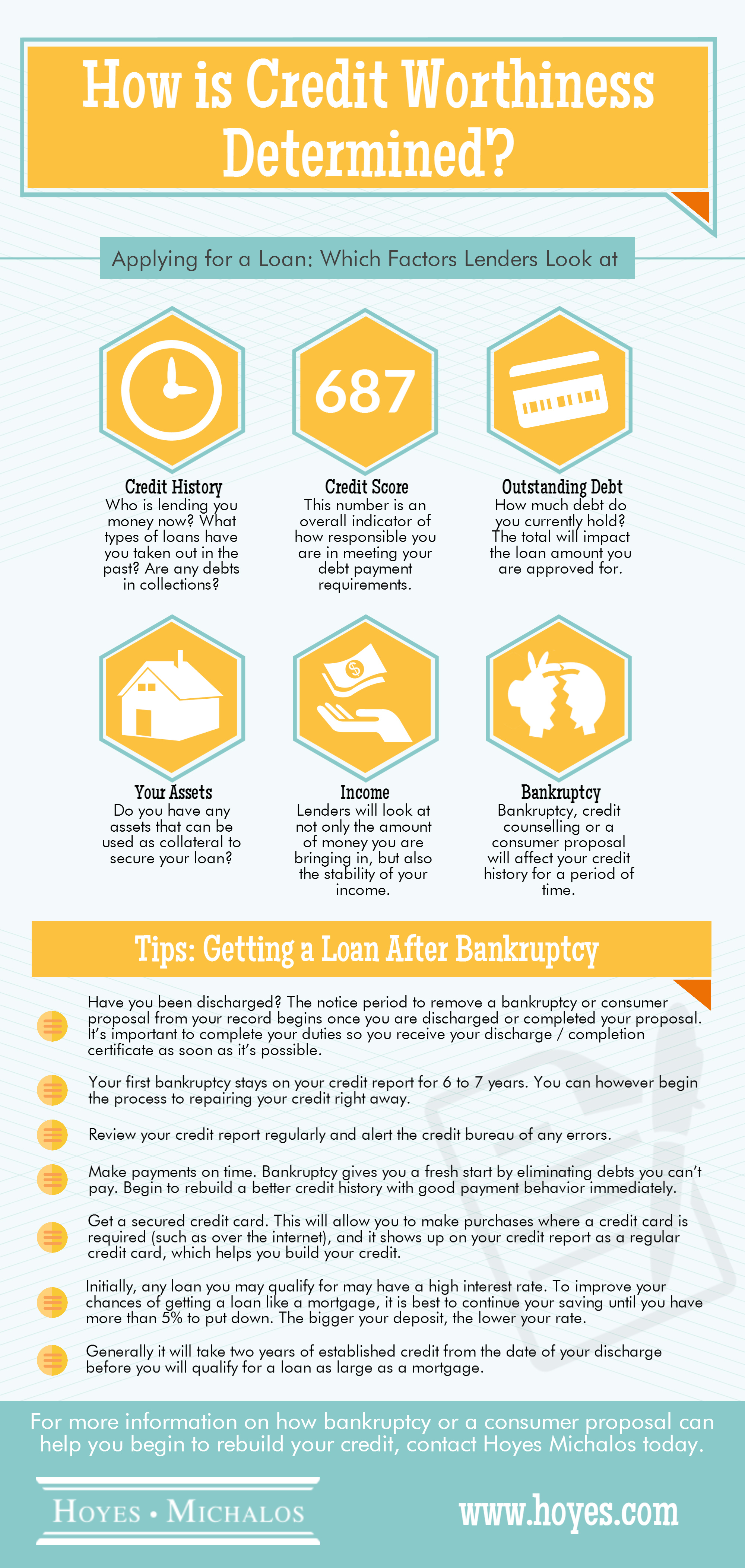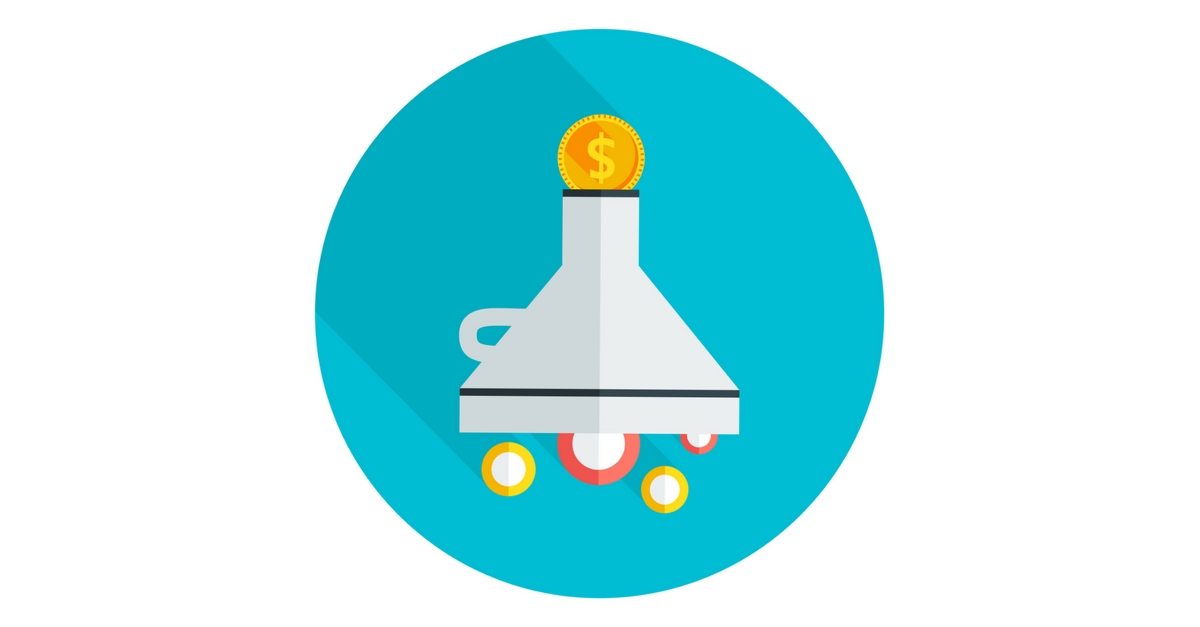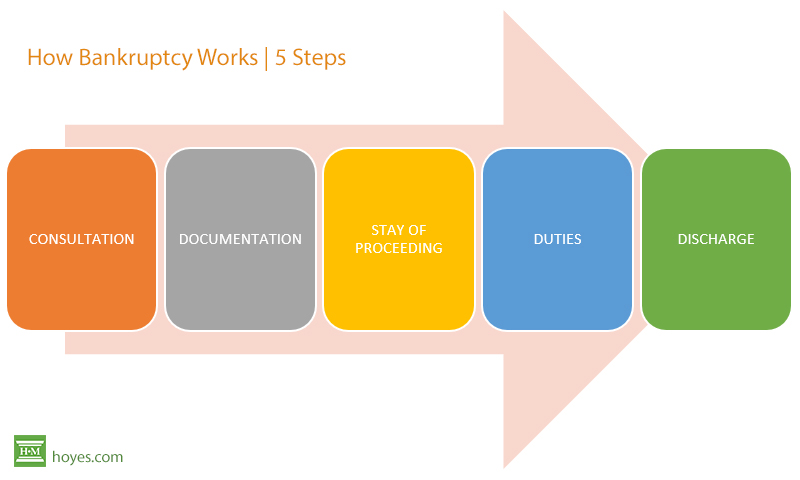
Filing for bankruptcy is a big decision. It has both positive and negative financial consequences that impact you and your family. Before you make such a big decision it’s important to weigh your options and understand the ramifications of filing for bankruptcy in Ontario, both in the short and long term.
A word of caution: Filing for bankruptcy can be a complicated process that can’t be fully understood by skimming through a few articles. We strongly suggest that you take your time and do your research to determine which debt management options are best for your unique situation. Ontario bankruptcy trustees are the best place to go when seeking detailed information about bankruptcy. At Hoyes Michalos we offer you a free initial consultation, which is great because it means that you can test the waters prior to making any commitments.
Bankruptcy costs

There is a financial cost to bankruptcy, and it’s different for every person who goes bankrupt. That’s because the government has decided that the more you earn and the more you own, the more you have to pay to your creditors. First let’s look at the cost based on your income. The government knows you need income to live on, so they allow you to keep a portion of your income for living expenses. The amount you get to keep is based on your family size, the bigger your family the more you get to keep. Earn income over this threshold and you have to pay half of this surplus income to your creditors. The second cost of bankruptcy is based on the assets you own. In a bankruptcy you don’t lose everything, just like with your income, the government created rules of what you can keep and what your creditors can have. The rules differ by province, but in Ontario you can keep most personal possessions and household furnishings, tools you need for work, 1 motor vehicle depending on its value, most pension and RRSP savings except recent contributions to an RRSP. There are dollar limits on the value of assets you keep, but in most cases, people find the limits high enough to protect their basic belongings. Your creditors are entitled to any equity in your home, investments and other assets, RRSP contributions you have made in the last year, tax refunds you might be entitled to up to the year you go bankrupt. If you have a lot of assets or a high income you should talk to your trustee about a consumer proposal. You can negotiate a plan to settle your debts and keep your assets. If you don’t have any assets and don’t earn any income, you might not even have to file bankruptcy. But if you do, you will need to make payments to cover the cost of administering your bankruptcy. Your situation is unique, to get an estimate of what your bankruptcy might cost, please call or email us to arrange a no charge initial consultation with a Hoyes Michalos professional.
The cost of bankruptcy includes fees that need to be paid when declaring bankruptcy such as government filing fees, court fees, and other administrative fees. The average bankruptcy will require a minimum payment of around $250 per month to cover these costs.
You will also be required to pay something called surplus income. Under the rules of the Bankruptcy & Insolvency Act, you are required to remit to your trustee 50% of your net income over a set minimum threshold. This calculation can become quite complicated and can increase the cost of your bankruptcy so you should always take to your trustee about the possibility of having to make surplus payments.
Another important point to mention is that if you file for bankruptcy you’ll be losing any assets that are non-exempt. You either surrender these assets to the trustee or can make additional payments to pay the trustee their fair market value if you want to keep those assets.
Not all assets are forfeit. Exempt assets in Ontario are covered in the Ontario Execution Act and the Bankruptcy & Insolvency Act. Some of the exemptions (updated for 2015 limits) include:
- unlimited clothing;
- $7,117 of vehicles;
- $14,180 of furnishings & appliances;
- $14,405 of equipment that you use for your career (tools of the trade)
- RRSPs and similar pension funds except contributions made within the last year.
Particular kinds of life insurance are also exempt.
What happens to my tax refunds?
Another complicated area in bankruptcy is tax refunds and HST credits. If you file for bankruptcy you won’t be eligible for some tax refunds or HST credits. You’ll also lose any windfalls during your bankruptcy. Windfalls include money that you’ve inherited from a family member or the lottery. The moment you’re aware of these, you must tell your trustee immediately.
Are there any debts I still have to pay?
Since secured loans, child support and alimony and some other debts cannot be included in a bankruptcy, you will still need to make your regular payments on these obligations even if you declare bankruptcy.
How can I lower my monthly payments if I have surplus income or assets?
If your income is high enough to trigger surplus income, or you have assets like equity in your home or investments that you would like to keep, talk to your trustee about a consumer proposal. A consumer proposal is an offer to your creditors as an alternative to bankruptcy. The amount you offer will still be based on what bankruptcy might cost as this is the minimum your creditors will expect. However, with a consumer proposal, you can spread this cost over five years, making the monthly payment much more affordable.
In order to understand how much you’ll repay once you’re bankrupt, your trustee will talk to you about your income, the size of your family and your assets as well as other considerations.
If you would like a personalized assessment of how much bankruptcy might cost for you, call us at 1-866-747-0660 for a free consultation with an Ontario bankruptcy trustee.










